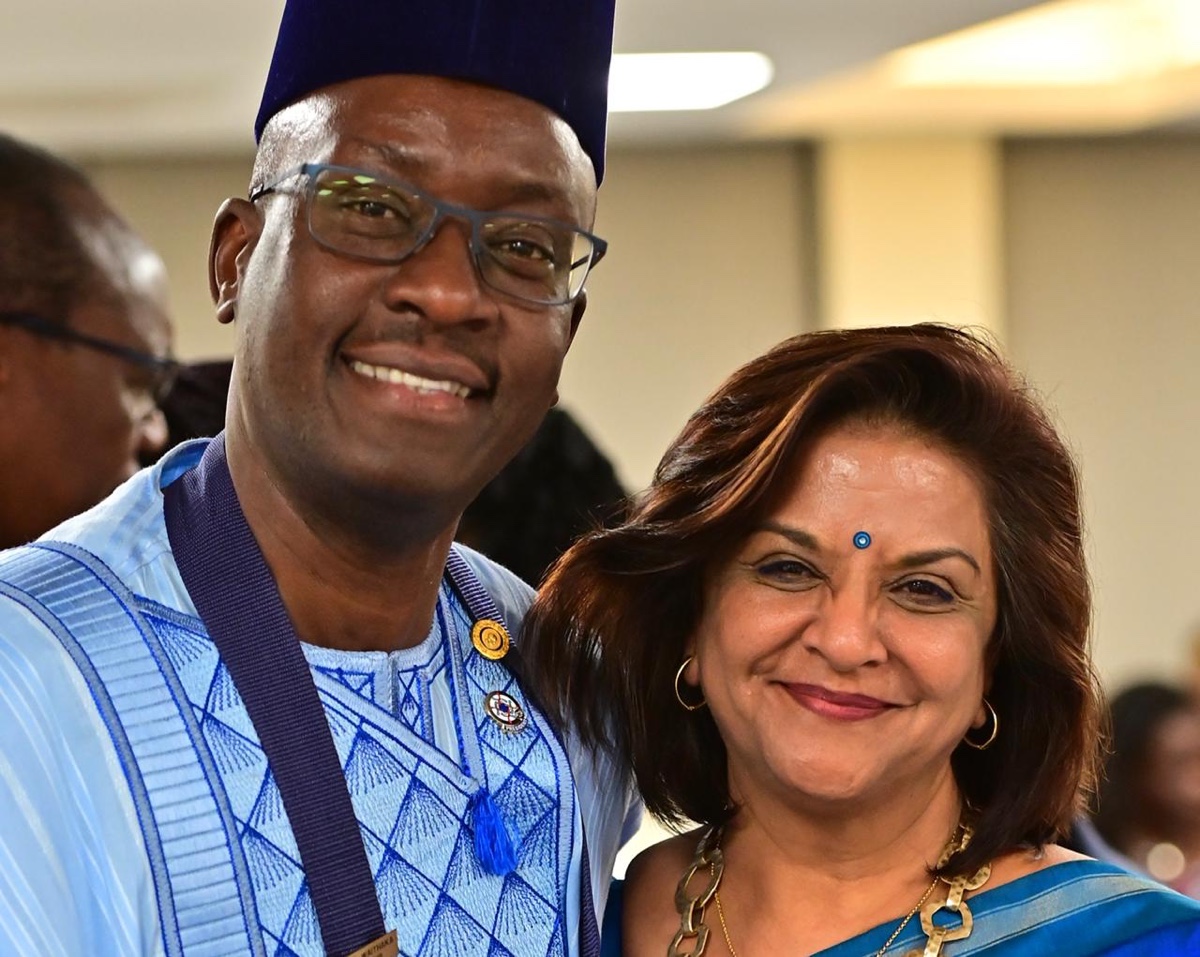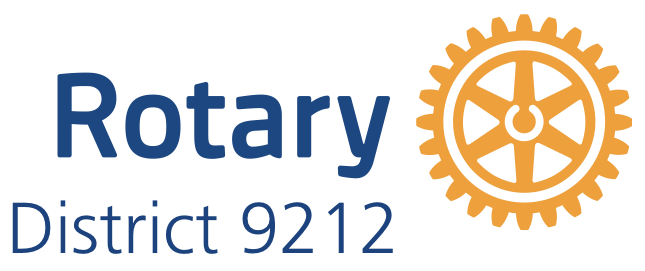BIG 5| For Rotary Muthaiga, diversity is its greatest strength

Warning: Undefined property: stdClass::$error in /home3/rotaryn2/public_html/timeline/wp-content/themes/theissue/inc/misc.php on line 71
Rotary Club of Muthaiga is one of the top five clubs within the District and it was chartered on the 22nd of May 1997.
As a boon to the family of Rotary some time ago the club held the regional record of having the most married couples as members, with a total of 6 couples.
At the helm of the club this year is none other than Rotarian Paul Kasimu. Paul is a humble, passionate, self driven and impressionable.
Professionally, he serves as the Chief Human Resource Officer at Safaricom. His purpose is to inspire possibilities in others in all his spheres of influence.
Why did you join Rotary?
I started this journey 14 years before I became a Rotarian. I went to a local Rotary Club and I felt it was too formal for me. So I didn’t join Rotary then, and soon after I traveled out of the country.
When I returned, I was invited to speak at a joint club meeting and after my speech one gentleman, Rotarian Jay Manek, asked ”Are you a Rotarian?” and I replied in the negative. He said ”Everything you do is what Rotary does,” and that was an ‘aha’ moment for me. I replied, “You know what, maybe I should reconsider joining Rotary.”
By then what were you doing professionally that might have led you to contribute in your capacity?
I think for starters, my purpose is to inspire the possibilities in others. I’ve worked in Human Resource for a long time. I worked initially with the government, and then I worked with Barclays Bank of Kenya, in Botswana and the UK. I came back to East Africa and joined Kenya Airways as a Group HR Director before going to East African Breweries where I served as the Group HR Director for that region. That was about two years before I joined Safaricom as the Chief Human Resource Officer.
I became a Chair of a Board of Governors in a secondary school in my village when I about 27 years after I had just left university and I was among senior executives like bank managers and the like.
My biggest inspiration comes from Mahatma Gandhi who says “The greatest legacy is to enable others to be the best they can be.” And I’ve seen people that are mentored grow to a point where they achieve their full potential.
So, in the church I was a patron of the youth for over 10 years at Holy Family Basilica and later I became the Youth Board Chair.
I also had electricity connected to the school and church in my village, and that kind of community development is what inspired my introduction and commitment to Rotary.
What do you think makes Muthaiga stand out as a club?
I think it is the Rotary Muthaiga spirit. The Rotary Muthaiga spirit is where people come to a meeting and instantly feel at home. When you come in, we expose you to what we do, and identify a mentor who will coach you and introduced to other forms of our club culture.
The other piece that works is the concept of the buddy-buddy groups. We have split members further into groups who then do various activities together such as Korogas, socials, and visits with one another. Within the same group, we also assign duties to those buddy-buddy groups, which also collectively do administrative tasks together.
Within those groups diversity is a key component and it is the biggest quality in Rotary club of Muthaiga. We have senior Rotarians who have been there longer while there are new ones with different classifications, and when you pair that, the power of diversity becomes our greatest strength and unifying factor.
Within that scope we have an annual business spied dating event, where we bring in members from all walks of careers and across different clubs.
It is clear that your members are highly engaged; how do you maintain this energy?
The other piece that is perhaps unique to Muthaiga is the projects we do. International projects where we have the global grants, we cross-partner with clubs from all over the world. One of the major ones is in Turkana, where we want to bring a project that we can change pastoralists into farmers. We have managed to create social farms which strike every goal of Rotary.
If you look keenly at what we have strived to do in the past (for instance we have completed seven projects in one year), we have done through good governance and with very clear member involvement. When we do it, we do it right. We qualified in all the citations in this current Rotary year, on everything that was being awarded and we won in each of those categories. That is what makes Muthaiga outstanding.
How do you as a president, avoid the formation of cliques as a result of this buddy-buddy groups?
I think the issue of the cliques is a real risk. What we have discovered is that we need change every year. Every committee should have members from the club drawn from different careers and walks of life, so that you are not surrounded by your friends.
Having said that, we also appreciate there are people with different interests. Therefore according to your preference, if you want to have a book club, mountaineering running club, we’ll create those three special interest groups. We believe diversity is our strength. So allowing people to express themselves is the thing that brings fun, relevance and connecting to the reason why we joined Rotary.
How many years have you been in Rotary and how has it contributed to your growth?
I have been part of Rotary Club of Muthaiga for 6 years. Within one year I became the secretary of the club. I think that was the best bit because every week I would do my minutes. What I purposed within myself was to make sure that I would release the minutes within the hour of that meeting ending so by 8.00pm or 9.00pm latest I would share minutes with the entire club.
One other resource that definitely came in handy in my growth was the Rotary Club Central, where you are exposed to several tools, you would find the do’s and don’ts of the projects that run, stories of other clubs, because the best way to learn is to associate with others, also be part the buddy-buddy groups where we go to other clubs and benchmark.
I was involved in the Strategic Planning Committee for District Governor Joe Otin. I am also in the Districts Training team that has definitely massively contributed to my growth.
What’s the greatest achievement your Club has achieved and how the growth been so far?
The Turkana one stands out; the pastoralist to farmers. Furthermore, also buying fishing boats to give a livelihood to their projects that cover schools and communities. So I would say that running the project successfully within the governance, quality and budgeted time, would be my number one.
Secondly we enable quality interactions with our weekly program. We brought influential leaders to talk about their leadership journeys, how they’ve navigated their worlds and we also bring subject matter experts. And then Muthaiga is fortunate to have senior Rotarians who have held major offices in our district. We have two Past District Governors and one District Governor Elect.
Leadership Development is the other big one. For example PDG Geeta has gone all the way up to the Rotary zone leadership and is now chairing Rotary International committees.
One of our members is also the Assistant Public Image Coordinator, Sylvia Mochabo.
What are your main challenges? How do you manage to navigate through them?
The first one is a growing trend that the past presidents disappear after their presidency. It’s a tough job, and the question is, is it burnout or is it lack of recognition? We have been in existence for 22 years. Imagine 22 past presidents attending regularly, or even having a council – they would be amazing reference points.
Meetings of the Past Presidents Council is the way that we bring the senior Rotarians back. Linked to that is an element of the integration of the new generation that is taking over the heritage of the club. One of the issues we are battling with is whether we should limit our membership numbers as some think that we have grown too large.
How do you integrate the old and the new in a way that people will go through the five stages of forming, storming, norming, performing and then adjourning? You’ll find some usual suspects in almost everything, and the others will just show up on the Mondays. So it is important to encourage every member to meet the service, attendance and contribution targets.
What are the three nuggets of wisdom that you could share with other clubs that are struggling with membership?
I think to focus on membership engagement. The way to do this is by striking a personal connection with each Rotarian. People join for different reasons; pursue what brought somebody to your club and try to appeal to that. I think leading a group of volunteers is not like leading in the corporate world. Keeping your finger on the pulse to know when you are losing people is critical.
Also create personal relationships where people feel there’s a family that exists amongst them.




